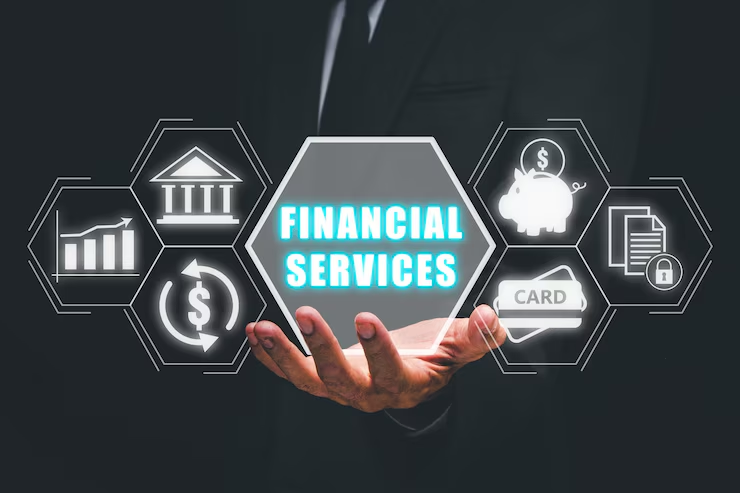Digital financial services are evolving rapidly, influencing how individuals and businesses access, manage, and interact with money. This wave of transformation, driven by cutting-edge innovation, is not just tweaking old systems but completely redefining them. Ensuring digital financial inclusion for underserved populations worldwide is now at the core of this evolution, blending innovation with accessibility.
This blog explores the significant strides being made in digital financial inclusion, identifying the challenges along the way, and spotlighting how technology is powering the future of financial innovation. Whether you’re a fintech enthusiast, a policymaker, or someone curious about the direction of the financial landscape, this guide offers insights to help you stay ahead.
What is Digital Financial Inclusion?
Digital financial inclusion refers to the efforts and systems that ensure individuals and communities, especially underserved populations, can access financial products and services affordably. These services include savings, payments, credit, and insurance, often delivered via mobile devices, digital applications, and online platforms.
The significance lies not only in offering financial opportunities but also in empowering diverse populations, ultimately contributing to greater economic equality. Yet, inclusion doesn’t occur automatically. Challenges like accessibility, financial literacy, and regulatory obstacles must be tackled to create an equitable system.
Let’s explore how innovation is stepping in to balance this equation.
Key Drivers of Digital Financial Innovation
Several technological advancements are driving the next wave of financial inclusion. Here’s how they are shaping the industry:
Mobile Technology
Mobile technology has already transformed the way people interact with financial services. According to the GSMA’s 2023 report, mobile money accounts surpassed 1.5 billion globally, impacting individuals who previously had no access to traditional banks. Mobile platforms like M-Pesa in Kenya have demonstrated the repercussions as entire economies begin to rely on these systems for payments, savings, and investments.
Why is mobile technology pivotal?
- It reduces the need for physical banking infrastructure.
- It brings services straight to rural and remote populations.
- It supports microtransactions, increasing affordability for low-income users.
Blockchain and Cryptocurrencies
Blockchain technology goes beyond the utility of cryptocurrencies like Bitcoin. It offers a transparent, secure ledger system that can simplify cross-border payments or manage identity systems for the unbanked. One example is “Project Dunbar,” a collaboration led by the Bank for International Settlements, which explores how blockchain-enabled central bank digital currencies (CBDCs) could enhance cross-border payments.
Cryptocurrencies also present unique opportunities for financial inclusion. Decentralized finance (DeFi) removes intermediaries in financial transactions, giving users the power to borrow, lend, and trade assets without relying on traditional financial institutions.
Artificial Intelligence in Financial Services
Artificial Intelligence (AI) is rapidly transforming credit scoring models, fraud detection, and personalized customer experiences. For example, AI-powered chatbots make banking services accessible in multiple local languages, lowering barriers for non-English speakers.
Another noteworthy application includes alternative credit assessments. By analyzing unconventional data such as mobile payment history or utility bills, AI ensures fairer credit evaluations for individuals without formal banking records, opening doors to financing.
Digital Wallets and Payment Platforms
Digital wallets like PayPal, Venmo, and Google Pay are driving seamless payment experiences. These platforms don’t only enable easy peer-to-peer transactions but also empower small businesses, allowing them to accept contactless payments. Digital wallets bridge gaps between physical infrastructure and technology, emphasizing their role in advancing financial inclusion.
Open Banking
Open banking initiatives allow third-party developers to access financial data securely to build user-oriented apps and services. By enhancing financial transparency and enabling broader data utilization, open banking better serves both customers and businesses.
For instance, a micro-entrepreneur can link their transactional data to financial management software, gain more accurate cash flow insights, and improve their borrowing potential.
Challenges on the Road to Inclusion
While innovation holds promise, the global landscape poses significant challenges:
1. Connectivity and Infrastructure
Digital financial inclusion heavily relies on internet penetration and mobile device access. Unfortunately, according to the World Bank, about 2.7 billion people remain offline, disproportionately affecting rural and underserved communities.
2. Financial Literacy Gaps
Ease of access to financial services doesn’t guarantee that users fully understand them. A lack of financial literacy can lead to misuse, overborrowing, and poor financial planning, particularly when interacting with new digital tools.
3. Regulatory Hurdles
Governments often face challenges enforcing regulatory frameworks that keep up with technological advancements. Balancing security, trust, and innovation is delicate, but necessary, for fostering inclusive ecosystems.
4. Trust and Security Concerns
Cybersecurity threats, such as identity theft or data breaches, can erode trust in digital platforms. For individuals unfamiliar with online systems, these risks can act as deterrents to adoption.
Innovative Solutions to Drive Accessibility
The challenges above are daunting but far from insurmountable. Here’s how the fintech ecosystem is working to resolve them:
Affordable Devices and Connectivity
Starts-ups and NGOs are working to close the connectivity gap. Companies like KaiOS Technologies are developing inexpensive smart devices packed with essential digital applications. They’ve collaborated with mobile network operators to create better access to digital financial products.
Simplified User Interface Design
Fintech platforms are harnessing design principles to ensure user-friendliness. Features like voice-based commands (adapted to regional dialects) and visual tutorials are helping people with lower literacy levels gain confidence in using these platforms.
Regulatory Sandboxes
Many countries are launching “regulatory sandboxes,” which allow fintech companies to experiment with innovative solutions under controlled environments. This approach fosters responsible innovation while protecting consumers.
Biometric Authentication
Biometric solutions, such as fingerprint or facial recognition, are bypassing complex passwords, reducing fraud risks, and enhancing usability for individuals lacking formal identification.
Why Digital Financial Inclusion Matters
The ramifications of a truly inclusive digital financial ecosystem are vast:
- Higher GDP Growth: Studies estimate that financial inclusion could contribute an additional $3.7 trillion to global GDP by 2025.
- Increased Entrepreneurship Opportunities: Small and informal businesses gain access to credit, growing their potential.
- Resilient Economies: Financial inclusion supports stability by broadening economic participation.
But above all, it levels the playing field, granting people the tools to secure better futures for themselves and their families.
Leading the Next Evolution in Financial Services
The next decade will redefine how we view and interact with financial services globally. As digital inclusion spreads, it will become all-encompassing, enhancing connectivity across rural areas, industries, and even nations.
However, inclusivity itself needs to remain the top priority. Emerging technologies must consider cultural contexts, regional literacy rates, gender disparities, and affordability. This demands collaboration across governments, organizations, and tech innovators worldwide.
For businesses, adapting to this landscape is no longer optional. Organizations must envision digital finance as an engine for innovation and inclusion, not simply a trend.
If you’re seeking to take advantage of advanced tools and platforms, now’s the time. By starting this transformation within your business ecosystem, you contribute to reshaping the global financial structure.








How Fintech APIs Enable Faster Product Launches and Scalable Financial Innovation?
Green Finance and Fintech: Driving Sustainable Investments with Technology
Cybersecurity in Digital Finance: A Guide to Asset Protection
AI in Wealth Management: How Artificial Intelligence is Reshaping Finance
Digital Twin Technology in Finance: How Virtual Models Are Transforming Risk Management
The Future of Personal Finance: Autonomous Finance and AI Money Management
AI Credit Scoring: Revolutionizing SME Banking and Digital Loans
AI Fraud Detection: How Banks Prevent Financial Crime in Real Time